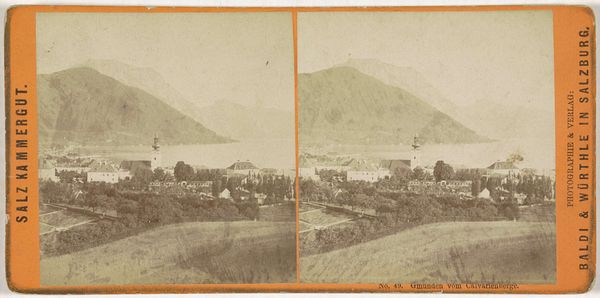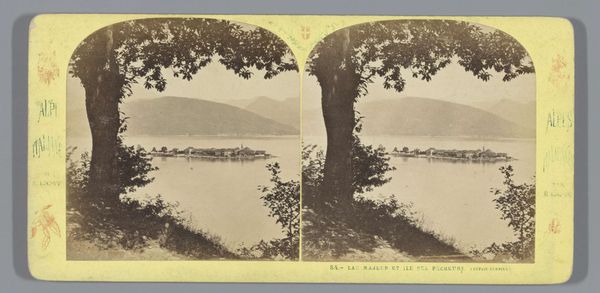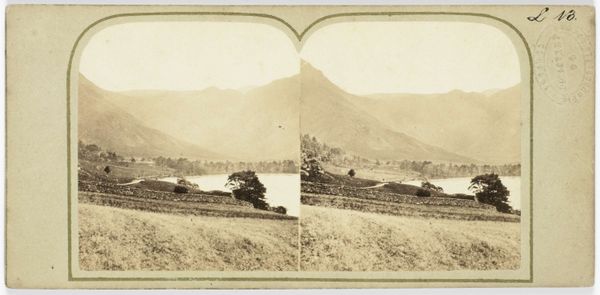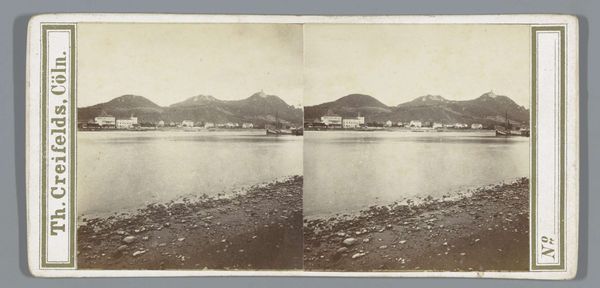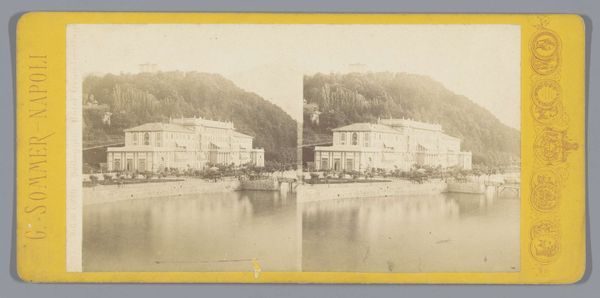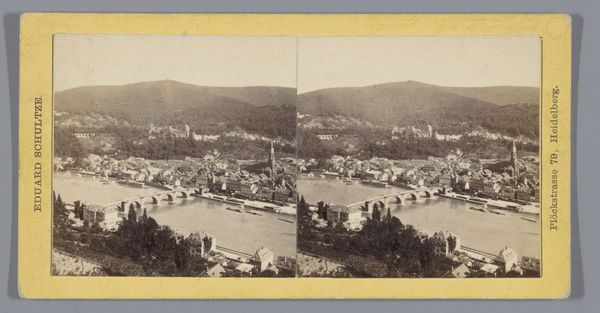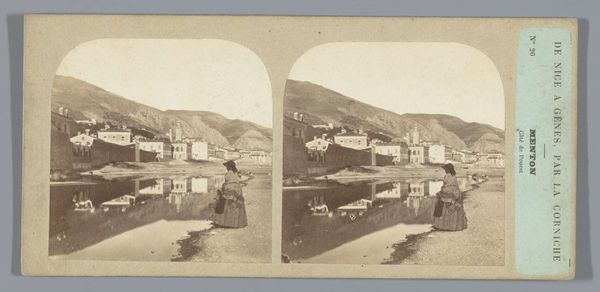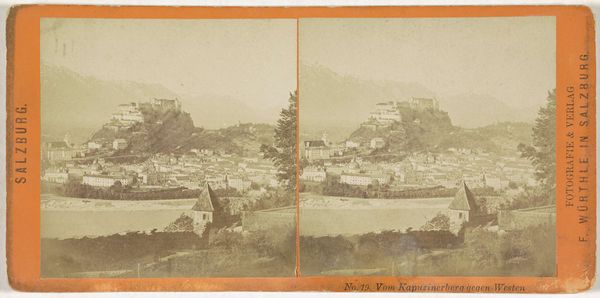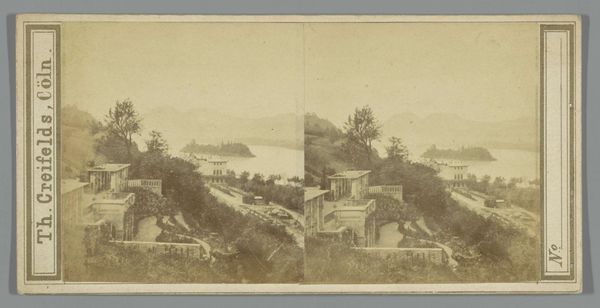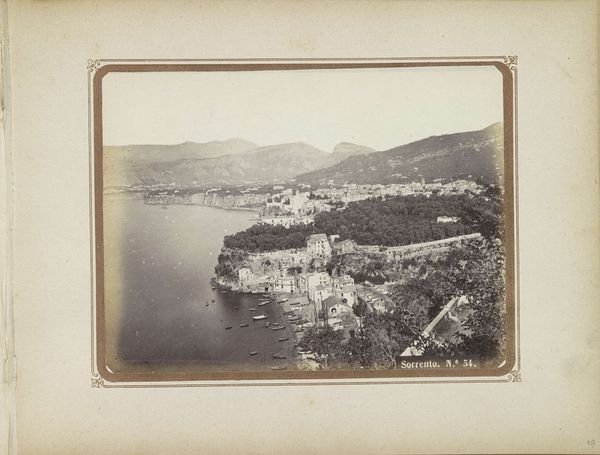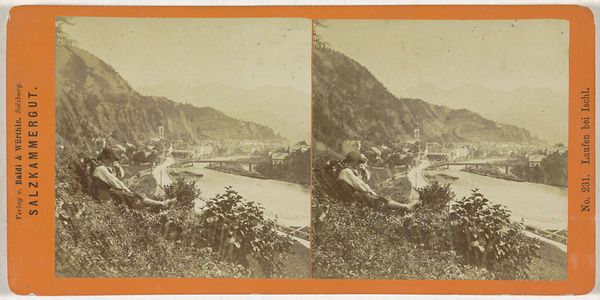
print, photography
#
pictorialism
# print
#
landscape
#
river
#
photography
#
cityscape
#
realism
Dimensions: height 85 mm, width 170 mm
Copyright: Rijks Museum: Open Domain
Curator: Before us, we have "Gezicht op Zell," a stereoscopic print by Sophus Williams, taken in 1881. It showcases the town of Zell, nestled along the Mosel River. Editor: It has a really tranquil quality, almost dreamlike. The sepia tones create this soft, nostalgic atmosphere. And the way the water mirrors the town above – it’s captivating. Curator: Indeed. Stereoscopic prints like this one were quite popular at the time, serving as accessible forms of landscape and cityscape tourism. One can consider the socioeconomic factors involved; the way industrialization and mass production impacted the dissemination and consumption of such images. Editor: Absolutely. And thinking about the gaze embedded in this work, I am intrigued by the intention behind capturing this specific perspective of Zell in the 19th century. How did the act of photographing it and the potential market for such a photographic print influence the very representation of this location? Curator: That's a critical point. Consider the materiality too – albumen prints offered detail and tonal range unavailable in other processes. We must ask, what kind of labour went into producing them? And where did all the raw materials come from? It can reflect the exploitative supply chains that were often integral to expanding capitalism and global resource extraction at the time. Editor: And even thinking about the domestic sphere – the photograph likely served as a status symbol, indicating the consumer’s connection to a broader cultural and intellectual landscape while reminding them of societal shifts or possibly anxieties of modernization. How does this tranquil depiction then align or contrast with those very real anxieties? Curator: It's this dialogue between technological advancement and social conditions that really brings this print to life, highlighting what details were captured through the use of advanced chemical solutions on specific supports for an expanding market of viewers, revealing how seemingly neutral technology is inherently tied to systems of labour, extraction and commodification. Editor: Precisely, reflecting how this serene landscape participates in those much broader systems. That’s what allows this single image to start a meaningful, wider conversation. Curator: A testament to how carefully considered, artistic pieces also mirror larger structural and industrial processes of their period. Editor: Making this, on the surface a simple scene, so much more.
Comments
No comments
Be the first to comment and join the conversation on the ultimate creative platform.

